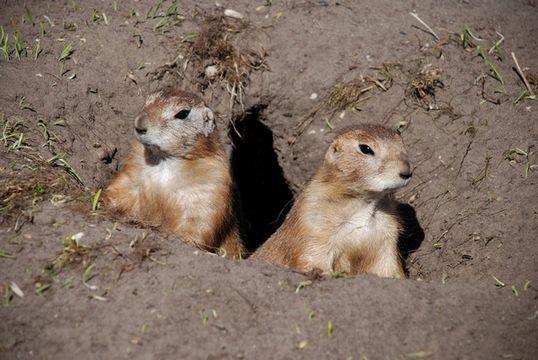How the prairie dog could help restore the ancient grasslands of Mexico and the American West
Prairie dogs are essentail to preserving the existence of grasslands in Mexico and the American West.
An ecosystem is like a giant game of Jenga — remove the wrong piece and the entire structure can collapse. The history of the black-tailed prairie dog and how its elimination altered the landscape of Mexico and the American West powerfully illustrates this principle.
Black-tailed prairie dogs once numbered in the billions across the grasslands of the Western US and Mexico, but ranchers essentially exterminated the rodent to make way for livestock.
In the 1800s, as cattle ranching was surging through the prairies of North America — from Manitoba, Canada all the way down to Chihuahua in Mexico, ranchers came to believe that prairie dogs were competing with their cattle for grass, and that cows and horses were breaking their legs by stepping into the prairie dog burrows.
Opinions are divided on how serious these problems really were, but the ranchers were convinced. Within a period of 50 to 60 years, prairie dogs were eradicated from 98 percent of the area they called home — from 30 billion animals to 1 or 2 million.
It was one of “the most dramatic, drastic exterminations of an animal by humans,” says Gerardo Ceballos, an ecologist at the National Autonomous University of Mexico.
Without prairie dogs, the prairies transformed. In Mexico, the desert moved in, thanks to a shrub called mesquite. Mesquite pushes a deep root into the Earth, sucking up water — and it attracts small animals that devour the grasses around it.
The mesquite helped create desert scrubland until there was little grassy prairie remaining — and with the arrival of the desert, the landscape lost its ability to maintain wildlife and plants. The land no longer supported the very ranching it was altered for.
Now, Ceballos is working to resuscitate the land by reintroducing prairie dogs to the Mexican desert. His passion for this project began in the summer of 1987, when he was working on his doctorate in Arizona. He and his wife were driving back to Mexico through Chihuahua, an area he’d never visited before. It was pretty much all desert.
But then one day, they encountered something they were “not mentally prepared to see,” Ceballos says: grasslands waving in the wind. This one area had somehow been spared.
“It was mind-blowing,” Ceballos says, “because all the way to the horizon there were prairie dogs and prairie dogs and prairie dogs. And then the next day we saw badgers. Badgers are very rare in Mexico. Golden eagles are also very rare in Mexico, and we saw more than 20 there in one single day. It hit me immediately that prairie dogs must have some role.”
It turns out that prairie dogs have more than just “some role:” they are what’s called a keystone species — the entire grassland ecosystem depends on them. They were the wrong piece of Jenga to remove.
Prairie dogs are actually a kind of squirrel that stands on two legs to survey the grasslands for predators and guard its burrows. And prairie dogs hate mesquite. It blocks their view of the horizon, where a predator might be lurking. So they do whatever they can to get rid of it: They chew up the roots, they suck on the stems — they run around like little gardeners, keeping the desert at bay. “Within one year, they destroy most of the mesquite,” Ceballos says.
Ceballos is also reintroducing black-footed ferrets (a species that hasn’t been in Mexico for at least a hundred years), pronghorn antelopes, bighorn sheep, wolves — even bison, which he’s getting from the US. He’s partnered with environmental groups and the government to create a reserve that protects these species, and then her offers local people ways to benefit economically from the grassland.
“A good scientist has to do good research, but then has to translate it into action,” Ceballos says. “There is no way that we can continue just being like historians — recording all the things that we are losing, instead of becoming actors. Now, my main objective in life is to save as many species of plants and animals as I can.”
This article is based on a report by Ari Daniel Shapiro that aired on PRI's Living on Earth with Steve Curwood. The report is part of the series, One Species at a Time, produced by Atlantic Public Media, with support from the Encyclopedia of Life.
We want to hear your feedback so we can keep improving our website, theworld.org. Please fill out this quick survey and let us know your thoughts (your answers will be anonymous). Thanks for your time!
